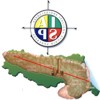Ninety-Percent Distal Pancreatectomy
DOI:
https://doi.org/10.6092/1590-8577/1064Keywords:
Meeting Abstracts, PancreasAbstract
Context Brittle diabetes typically plagues the quality of life of patients after total pancreatectomy. Sparing even a small amount of endocrine tissue avoids extreme glycemic fluctuations, by maintaining a source of servo-regulated endogenous production of all pancreatic hormones (insulin, glucagon, somatostatin and pancreatic polypeptide). Objective We report on the outcome of a selected group of patients undergoing ninety-percent distal pancreatectomy (90% DP). Methods From April 2000 to May 2012, 90% DP was performed in 26 patients: 7 males (27%) and 19 females (73%), with a mean age of 68 years (range 40-79 years). Twenty-three patients underwent conventional open resection while 3 had a laparoscopic operation (robot-assisted in 2 of them). Splenectomy was associated in 24 patients (92%), while 2 had a multivisceral resection. Segmental resection of peripancreatic vessels was associated in 4 patients (1 celiac trunk-hepatic artery, and 3 superior mesenteric/portal vein). Results Seventeen patients were diagnosed with ductal adenocarcinoma (65%), 3 with well-differentiated endocrine tumor (12%), 3 with a serous cystadenoma, 1 with a mucinous cystadenocarcinoma (4%), 1 with carcinoma on IPMN, and 1 patient with chronic pancreatitis. Mean operative-time was 330 minutes (range 180-535 minutes). There was no post-operative mortality with a morbidity of 40%. Pancreatic fistula was recorded in 8 patients (32%) and was always managed conservatively. Thirteen patients developed insulin dependent diabetes mellitus (50%) and 16 developed exocrine insufficiency (61%) requiring enzyme supplementation. Conclusions 90% DP may be considered in patients with centrally located pancreatic lesions to avoid the complications due to pancreatic exocrine and endocrine insufficiency. In selected patients 90% DP may be performed laparoscopically, especially if robotic assistance is available. Careful patient selection and extended experience in pancreatic surgery are crucial to achieve the best results.


